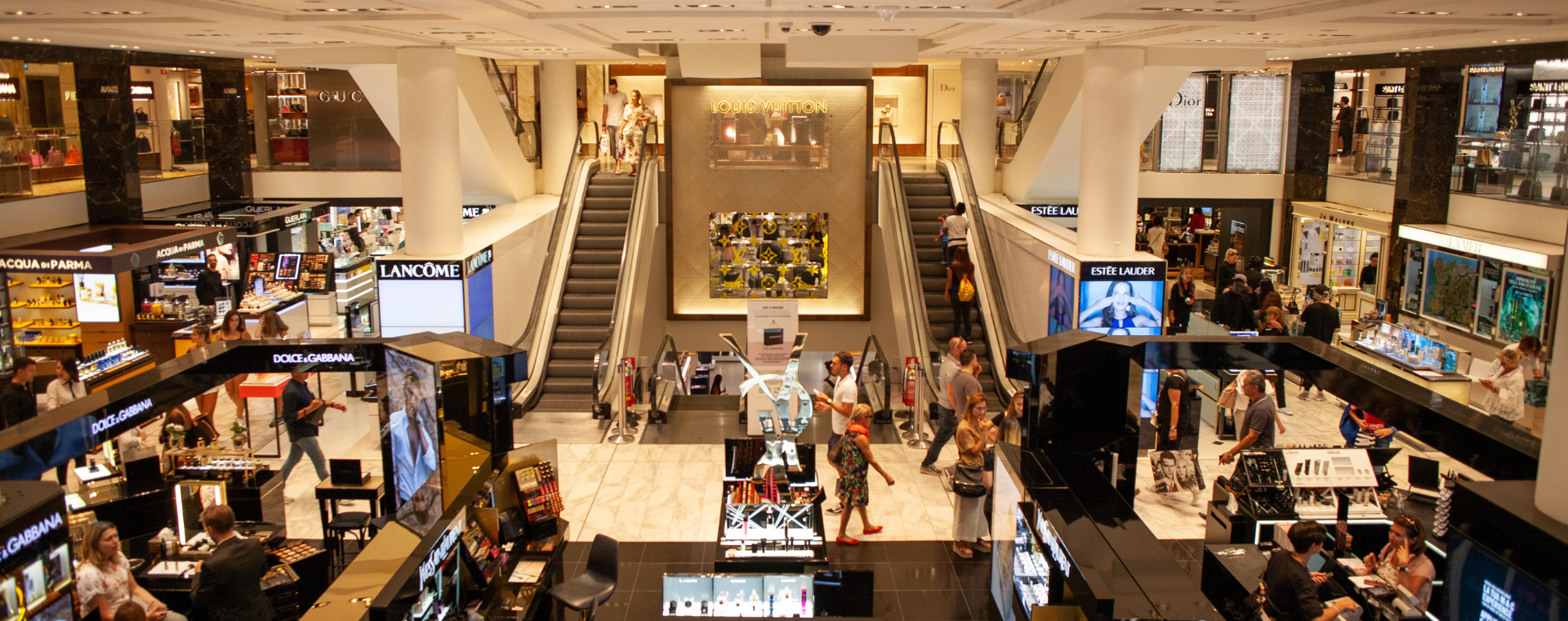
Whether you like it or not, digital in-store has become common and doesn’t look like it’s going anywhere anytime soon.
No longer viewed as particularly different or unique, it has become commonplace on the high street – just walking a short distance along Oxford Street, we are met by multiple digital window displays or in-store digital activations. It has even made its way to most supermarkets.
However, our experience testing the impact of digital screens all around the world (and across many categories) is that they are often ineffective – there is a lot of non-viewing and limited usage amongst consumers.
Digital is an expensive investment to implement and maintain, so it’s critical that brands think carefully about what they want to get out of it. From what we see, there is a lot of simply including digital for the sake of having digital. However, the real value lies in purpose-driven integration, and brands should not succumb to the allure of novelty alone. Instead, they should carefully evaluate how digital can elevate the shopping experience. It’s crucial to move beyond adopting digital for its own sake and to carefully consider its purpose, functionality, and impact on the consumer shopping journey. Each digital element should justify its presence by addressing a specific need or adding a novel layer of interaction.
After many years of observing and testing digital activations in-store, Savanta has some key rules to follow for those wanting to use/activate digital in-store:
1- Purposeful integration: going beyond skin-deep
Before committing to digital installation in-store, brands should ask themselves:
- How will this enhance the consumer shopping experience?
- What is in it for the consumer?
- Does it offer something they can’t simply do in the comfort of their own home on their mobile phone?
It’s key to remember that consumers are in-store for a reason. If they can do it online, why wouldn’t they just do it there? Digital in-store must be more experiential and personalised, offering genuine value for consumers rather than serving as mere eye candy. The evolving role of brick-and-mortar stores is to provide unique experiences that online shopping cannot replicate. Whether it is facilitating product discovery, aiding purchase decisions, or offering a more immersive brand and product experience, the purpose of digital integration should be crystal clear.
2 – Strike the right balance: standout, accessibility and privacy
Digital implementation in-store should be carefully thought out, as having too much digital often means that nothing really stands out. So, be selective.
Remember that movement and lighting help capture attention and break up consumer sightlines, making digital screens a core candidate to create standout and naturally drive traffic in their direction.
Make sure the location is somewhere shoppers can easily notice the display – don’t hide the display away in a corner or make it awkward to get to. The amount of times we have seen digital displays right by a try-on area or hidden at the back of a store is too many to recall.
However, standout and accessibility also need to be balanced with enough privacy if the interaction involves consumers showcasing themselves on a screen. Again, we have seen so many digital implementations simply not being used because consumers didn’t feel comfortable interacting and having their image showcased to the rest of the store. If a display requires shoppers to interact personally, it should be designed in a way that respects their comfort zone. Consider digital within fitting rooms, for example, if a consumer really needs a personal interaction.
3- Easy consumer experience – keep consumer user experience top of mind
How will people know how to use it?
A call to action is crucial. If you intend for consumers to interact with a device, make sure they feel invited and have permission to use it. It’s often the case that consumers assume something isn’t for them. Something as simple as “Try me”, “Test me for yourself” or “Touch the screen” can work wonders.

Beyond the initial interaction, the interface should be easy to navigate and simple to understand. Most consumers don’t go beyond the first two or three clicks of a digital display, so make sure that the main offering is achievable within this number of clicks. User-friendliness and intuitiveness are key here.
4- Staying on top of the glitches
When digital isn’t working, it sends out the worst message and completely negates the point of installing digital in the first place. Unfortunately, often, digital activations in-store are out of service with a broken screen or have glitches, causing consumer frustration rather than enhancing their shopping experience. Regular maintenance checks and swift responses to technical issues contribute to a cohesive and positive shopping journey.

And finally, remember that sometimes digital just isn’t the answer. We know this isn’t exactly what you want to hear, but depending on the end goal, sometimes the old methods simply work best. After all, when consumers have constant access to digital at their fingertips, wherever they are, and whenever they want, sometimes taking them away from that is the best way to capture their attention, get them engaging, and generate intrigue.
If you’re considering digital in-store or are looking to reassess digital investment you already have, Savanta can help at any stage of your in-store digital journey, from initial concept ideas testing to in-store implementation.





